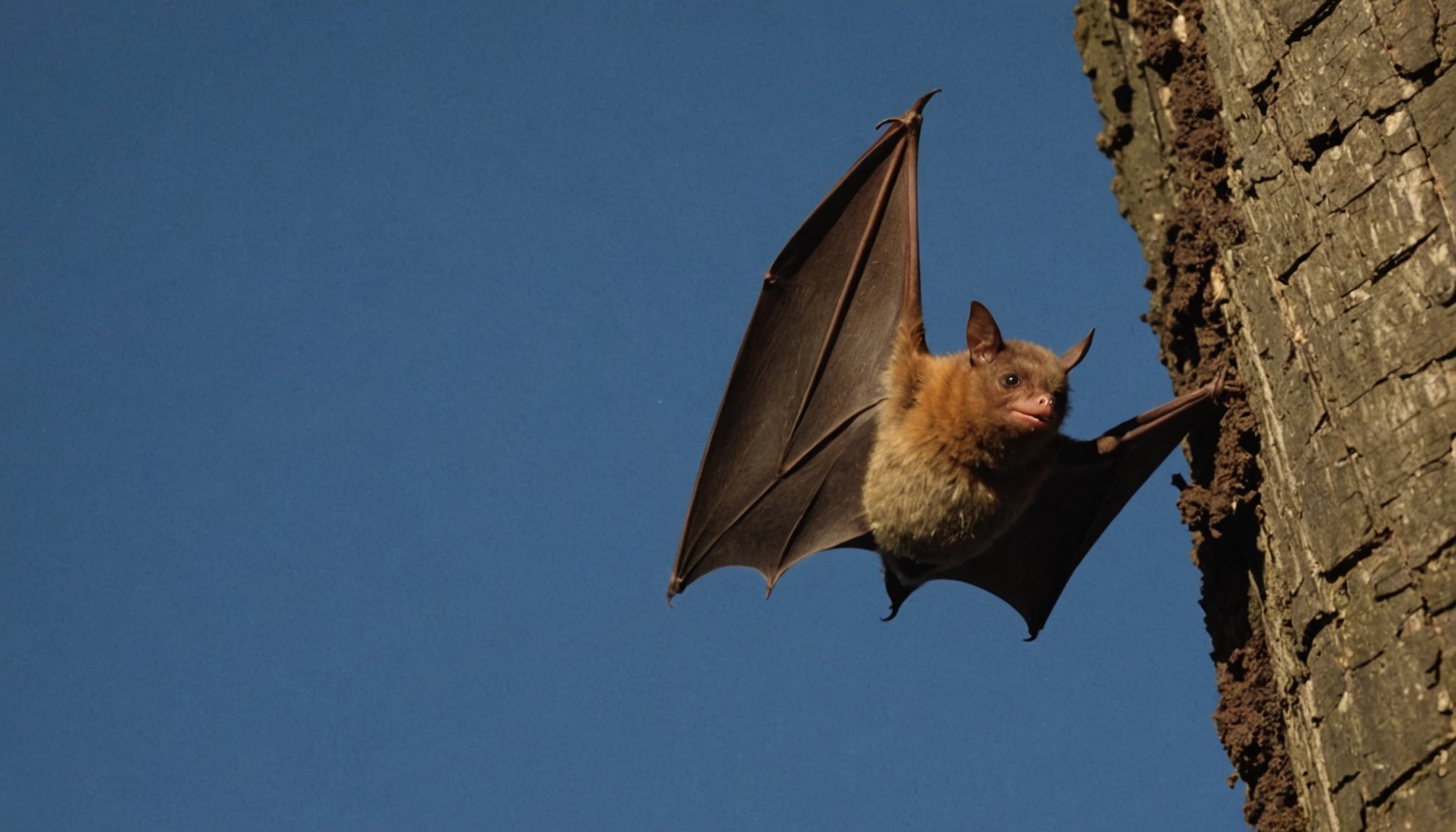Understanding the Role of Bats in the Ecosystem
Discovering the importance of bats in ecosystems reveals their diverse contributions, notably as key agents in pest control and pollination. In the UK, various bat species play significant ecological roles. For instance, by consuming vast quantities of insects, they help control pest populations, reducing the need for chemical pesticides in agriculture.
Bats act as pollinators, assisting in the reproduction of many flowering plants. This signifies their crucial role in maintaining biodiversity. The decline in bat populations could lead to increased agricultural pests and disruptions in plant pollination, potentially affecting food production and ecosystem balance.
Also to discover : Preserving Wildlife Journeys: The Role of UK Overpasses and Underpasses in Protecting Migratory Species
The Biodiversity that bats support is vital for healthy ecosystems. Their presence or absence can ripple through their environment, affecting various species and ecological processes. Protecting bats through bat conservation efforts helps safeguard these critical functions.
Finally, the decline of bat populations presents a concerning impact, resulting in ecological imbalance and potential economic cost due to increased pest populations. Recognizing and valuing bats’ roles encourages conservation actions ensuring ecosystems remain robust and resilient.
In parallel : Revolutionary techniques by uk researchers for reviving marine wildlife impacted by oil spills
Benefits of Community Engagement in Bat Conservation
Integrating community involvement into bat conservation efforts can yield substantial benefits, both economically and environmentally. By engaging local communities, we foster stronger social ties and enhance understanding of bats’ ecosystem importance. Communities become key players in steering initiatives that promote ecological balance.
Local initiatives not only support biodiversity but also offer economic benefits by reducing reliance on costly pest control measures. When communities actively participate, they contribute to lowering agricultural costs by supporting natural pest control through bat populations.
Consider the case of a rural village in the UK, where community-driven bat conservation led to decreased agricultural pests, showcasing tangible eco-friendly solutions. Furthermore, when locals understand the role of bat populations and how to protect these species, there’s a marked change in conservation attitudes and practices.
By promoting community involvement, the ripple effect extends beyond conservation efforts. It strengthens bonds between residents and transforms local conservation into a shared responsibility. This active participation not only aids bats but also invigorates community pride and connectedness. Joining these efforts encourages local investment in conservation, ensuring their success and sustainability over time.
How to Get Started with Local Bat Conservation Efforts
Embarking on local bat conservation projects requires understanding the local bat species and their specific habitats. Begin by identifying the bat species present in your area through tools such as surveys and local wildlife databases. Understanding their behaviors and habitats aids in creating effective conservation strategies.
Connecting with like-minded individuals and organizations is pivotal. Build networks with local wildlife groups, environmental organisations, and governmental bodies. These connections not only provide resources and guidance but also amplify conservation impact. Collaborate to share knowledge, expertise, and resources for more comprehensive efforts.
Organising community events and educational workshops is an effective way to boost local engagement. Workshops provide platforms to educate community members about bats’ vital ecosystem roles and the significance of their conservation. Community events like bat walks or talks can stimulate interest and foster a deeper connection with local wildlife.
By enhancing local engagement, these initiatives nurture a culture of conservation while paving the way for more actionable steps. Pursuing these projects with dedication contributes to maintaining biodiversity, ensuring the survival of bat populations and the continuous support of their crucial ecological roles.
Educational Resources for Bat Conservation
Exploring educational options in bat conservation is crucial for enhancing awareness and engagement. To begin, recommended reading and websites offer a foundation of knowledge. Books by experts in the field and websites of nature organisations provide insights into bats’ ecological roles. These resources are invaluable for both beginners and seasoned conservationists seeking to expand their understanding.
Local Workshops and Training Programs
Participation in local workshops and training programs offers hands-on learning. These sessions, often organised by wildlife groups, equip participants with techniques for bat monitoring and habitat protection. Engaging in such programs fosters a practical understanding of conservation practices. Additionally, they serve as platforms to connect with experts and fellow enthusiasts.
Online Courses and Certification Options
For those preferring remote learning, online courses and certification options present a flexible alternative. Many universities and environmental organisations offer courses that delve into bat ecology and conservation strategies. These courses often incorporate the latest research and innovative practices, allowing learners to deepen their expertise and contribute effectively to conservation efforts. Such programs empower individuals to make informed decisions and support conservation initiatives with confidence.
Volunteer Opportunities in Bat Conservation Projects
Engaging in volunteer initiatives offers hands-on experience, providing unique insights into the ecosystem importance of bats. Various programs across the UK invite community members to support bat conservation through active participation. These initiatives often involve activities such as monitoring bat populations and managing habitats.
Volunteering in conservation projects enables individuals to contribute to significant biodiversity efforts. Participants gain valuable skills and knowledge while making a positive impact on the environment. Hands-on experience with local bat monitoring helps in comprehending the challenging aspects of bat conservation.
Finding the right volunteer opportunity can be facilitated by reaching out to local wildlife organisations and conservation groups. They frequently host events and provide information sessions for interested individuals. Exploring online platforms that connect volunteers with environmental projects is also a viable option.
By joining such initiatives, volunteers play a crucial role in fostering community support for bat conservation. This involvement not only aids in the protection of bats but also promotes an understanding of their vital ecological roles. Engaging in these projects can nurture a deeper appreciation for wildlife and encourage ongoing commitment to preserving biodiversity.
## Tips for Effective Community Engagement in Conservation Activities
Implementing successful conservation strategies hinges on **community awareness** and active participation. Raising awareness about bats and their ecological roles can be achieved through engaging educational campaigns and events that highlight their significance. Such efforts should focus on demonstrating the importance of bat conservation for ecosystem health, incorporating clear and relatable messages.
Engaging local stakeholders, including policymakers, is crucial for fostering **long-term support**. Organising dialogues and forums provides platforms to discuss conservation goals and collaborative opportunities. Inviting stakeholders to become part of the decision-making process ensures that initiatives align with community needs and resources.
Developing robust communication channels is essential for facilitating ongoing community involvement. These channels may include newsletters, social media outreach, and regular town meetings. Keeping the community informed of progress and successes encourages continued enthusiasm and participation.
Effective outreach efforts also involve feedback mechanisms, enabling communities to voice their thoughts and suggestions on conservation activities. This reciprocal communication helps refine strategies and enhance their overall impact. By fostering a culture of **community engagement**, conservation activities are more likely to succeed, ensuring both ecological and social benefits.
Measuring the Impact of Local Bat Conservation Efforts
Understanding the impact of local bat conservation efforts involves systematic evaluation and accurate data collection. Identifying the success metrics of projects relies on techniques that assess conservation effectiveness. This includes monitoring changes in bat populations over time, often achieved through regular surveys and data analysis.
Frequent data collection is essential to track these populations accurately, contributing to an understanding of trends and identifying any concerning declines. Conservation impact is measured not only in numbers but also in the ecological health of habitats where bats reside. Healthy, thriving bat populations indicate a balanced ecosystem, showcasing the broader implications of successful conservation.
Engagement extends beyond data collection; it’s vital to communicate findings with the community. Sharing results fosters a sense of shared success, boosts community engagement, and encourages ongoing participation. Regular updates can be delivered through community meetings, newsletters, or online platforms, creating transparency and collective ownership of conservation outcomes.
Emphasising the importance of data in monitoring progress ensures that efforts are adaptation-ready, capable of responding to new challenges. By fostering an informed community, conservation initiatives maintain momentum, driving ecological balance and sustainability.






